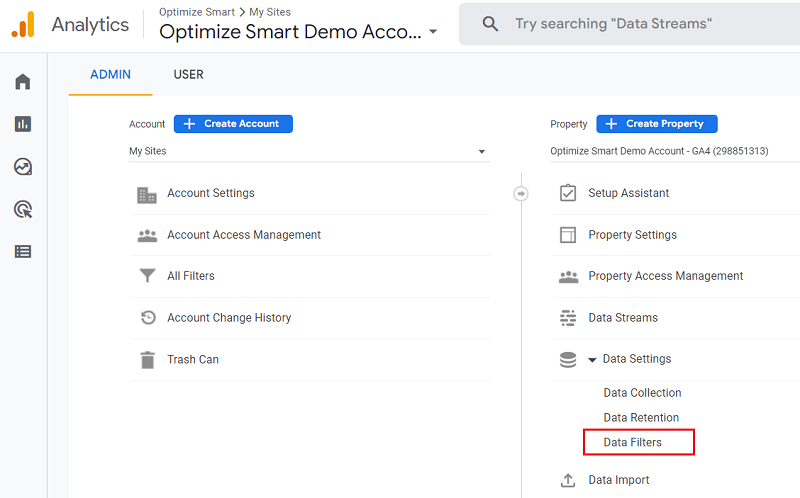An Unbiased View of In Which Order Does Google Analytics Filter Data
Table of ContentsSome Ideas on In Which Order Does Google Analytics Filter Data You Need To KnowIn Which Order Does Google Analytics Filter Data for Dummies4 Easy Facts About In Which Order Does Google Analytics Filter Data ShownThe smart Trick of In Which Order Does Google Analytics Filter Data That Nobody is DiscussingWhat Does In Which Order Does Google Analytics Filter Data Do?In Which Order Does Google Analytics Filter Data for Beginners
io" is the website and if I go to the homepage and also click some other pages like signup page, it shows me in the real-time report popping-up as exactly how we established up in the filters. This web page is the of web site as well as you can see the sub-domain highlighted as.
Comparable to the previous process, we should develop a new filter as stated in the last steps - In Which Order Does Google Analytics Filter Data. in this new filter, I'm calling it as and also I'm selecting Then I'm inputting the filter pattern as In this filter pattern, the pipeline symbol () is consisted of to attach any type of various other hostname that you wish to include together with the various other hostnames
In Which Order Does Google Analytics Filter Data Can Be Fun For Anyone
This is how you can go examine your website and also resurgence sight in real-time reports. The real-time report currently shows the adjustments that you made when producing that filter. In this case, the Broken web page discusses about link of the web page i. e when the Page link being repeated the very same, omitting slash or any type of minute aspects.
Now create a brand-new filter and I call it as. Choose and also select the filter areas.

How In Which Order Does Google Analytics Filter Data can Save You Time, Stress, and Money.
The adhering to instructions will certainly walk you with the procedure: Produce a new Google Spreadsheet (or open up an existing one). From the menu bar select: Add-ons > Get Attachments Discover the Google Analytics Attachment from the attachments gallery and also select it. From the add-on description page, click the "+" in the leading right edge to include this add-on to your spread sheet.
Reports can be produced manually or with the assistance of the add-on's record development device. To make use of the device, choose "Add-ons" > "Google Analytics" > "Develop a New Report" from the menu bar.
The device is indicated to assist obtain you started as well as offer you with the details you may not know off check my source the top of your head. The remainder of the areas will certainly need to be gotten in by you.
In Which Order Does Google Analytics Filter Data - An Overview
It can be a sheet in the spread sheet you're currently in, or a various spreadsheet altogether (as long as you have modify access to that spread sheet). To print the results to a different spread sheet copy the spreadsheet URL and also paste it into the cell to the right of the "spreadsheet-url" criterion.
This opens up a report organizing dialog where you can turn organizing on and off, and also set just how often your report will run. To transform scheduling on, examine the box labelled "Enable records to run immediately." As soon as organizing is enabled you can utilize the choose dropdown to manage the moment as well as regularity.
When scheduling reports, ensure there is internet plenty of time between when you create the schedule as well as when the routine helpful resources is intended to run. If it's also close to the first event of the scheduled time, there's a possibility those records will be postponed until the next incident. It's generally best to leave at the very least a one-hour barrier.
The Ultimate Guide To In Which Order Does Google Analytics Filter Data
Hidden parameters are innovative choices that are not needed for most records and also are concealed by default. You can utilize these specifications by un-hiding the rows 14-16 in the Record Setup sheet. Name Description This is the report name. It will certainly additionally be the name of the sheet where the report information is written.
The adhering to expression returns the last day of the previous month: =EOMONTH(TODAY(), -1) The end day for bring Analytics data. Demands can specify an end day formatted as YYYY-MM-DD, or as a family member date (e. g., today, yesterday, or Ndays, Ago where N is a favorable integer). You can also make use of Sheets date functions to define this value programmatically.
Metrics can be defined in one of two formats: For instance, every one of the following are legitimate values for the Metrics criterion. ga: sessions, ga: bounces ga: sessions ga: bounces ["expression": "ga: sessions/ga: customers", "alias": "Procedure per User", "format, Type": "DRIFT", "expression": "ga: total, Events/ga: pageviews", "alias": "Occasions per Pageview", "format, Type": "FLOAT"] For most make use of situations, a listing of metric IDs is the easiest method to define the Metrics parameter.
The Best Guide To In Which Order Does Google Analytics Filter Data
The complete listing of dimensions and metrics as well as their legitimate mixes is readily available utilizing the Dimensions and also Metrics Explorer. Call Description A listing of dimensions to quiz. Dimensions can be defined in a couple of formats: As an example, all of the adhering to are valid worths for the Metrics criterion. ga: source, ga: device, Category ga: resource ga: device, Group ["name": "ga: source", "name": "ga: device, Group"] For many use instances, a listing of measurement IDs is the simplest way to define the Capacities parameter.